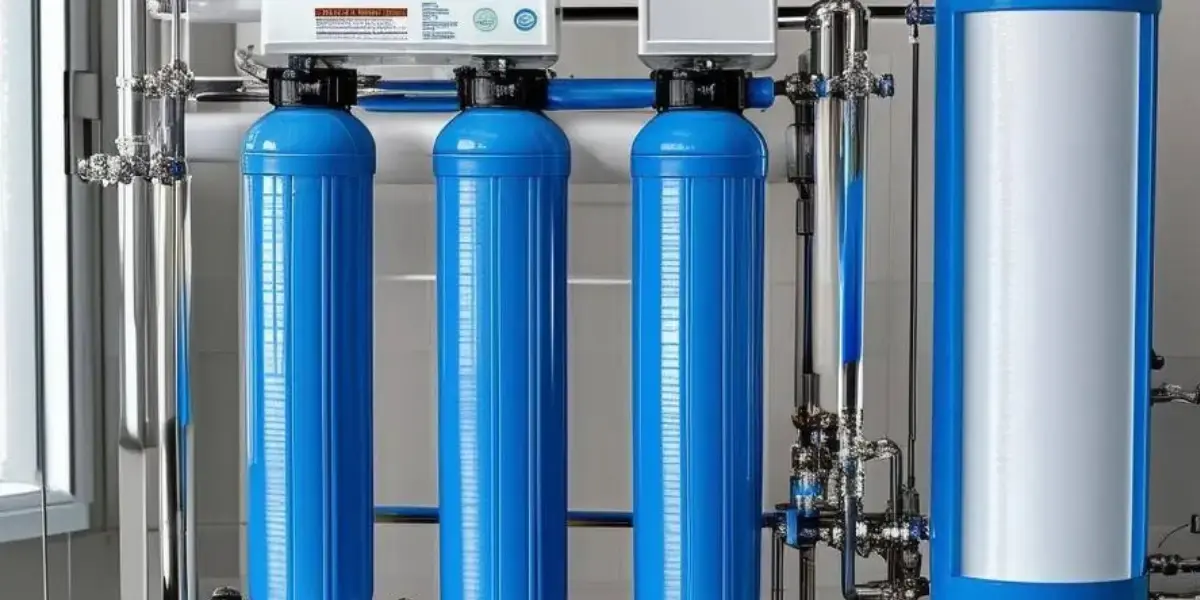What every business should know about ACOP L8 compliance
Every business needs to understand and carry out their legal and regulatory duties regarding the control of Legionella – the bacterium that causes Legionnaires’ disease, a lung infection that can be fatal.
The Health and Safety Executive’s Approved Code of Practice (ACOP) L8 gives guidance on how to comply with your legal and regulatory responsibilities in relation to the control of Legionella.
Legionella bacteria: a serious threat
Legionella bacteria is commonly found in natural water sources such as rivers, lakes and reservoirs, but usually in low numbers. It can also be found in man-made water systems such as cooling towers, evaporative condensers, hot and cold water systems, as well as spa and swimming pools.
Man-made water systems can contain the perfect conditions for Legionella bacteria to multiply and to be sent out as an aerosol. Legionella bacteria thrives when water temperatures are between 20-45°C, when nutrients such as rust, sludge, scale, sediment and algae are available, and also where water is stagnant in the water system, for example if a shower or tap is not used regularly.
If Legionella bacteria is able to grow in these water systems, it can present a real danger of serious illness or even death. If people inhale water droplets carrying Legionella bacteria they can become infected with Legionnaires’ disease, a severe and potentially fatal disease. It is especially dangerous to groups who are at greater risk such as people suffering from chronic respiratory, kidney, lung or heart disease and those with an impaired immune system.
Where water is used in a way that might result in a reasonable risk of exposure to Legionella, like in commercial buildings, hospitals and leisure facilities, there are health and safety duties which must be met.
%20(1).jpg?width=800&name=My%20project%20(19)%20(1).jpg)
What is ACOP L8?
ACOP L8 is the shortened acronym for the approved code of practice "Legionnaires' disease: the control of legionella bacteria in water systems". It gives practical advice on Legionella control and how to comply with the law. It is the eighth edition and was published in 2013.
ACOP L8 sets out practical guidance on how to meet legal and regulatory requirements in relation to the control of Legionella, as contained in the following:
- The Health and Safety at Work etc Act 1974;
- The Control of Substances Hazardous to Health 2002; and
- The Management of Health and Safety at Work Regulations 1999.
Business owners and landlords can face prosecution for breaching health and safety law if they don’t follow the advice provided in the code. ACOPs are approved by the Health & Safety Executive Board with the consent of the Secretary of State.
Earlier editions of ACOP L8 included technical guidance. This is now published separately as HSG274 and covers specific technical guidance on evaporative cooling systems, hot and cold water systems, and other risk systems. HSG274 is available to buy as a book from the Health and Safety Executive website. HSG282 has specific technical guidance on spa pools.
Who is ACOP L8 for?
ACOP L8 is for any premises controlled in connection with a trade, business or other undertaking where water is used or stored, and where there is a means of creating and transmitting water droplets which may be inhaled, causing a reasonable risk of exposure to Legionella bacteria.
The guidance is aimed specifically at duty holders, including employers, those in control of premises and those with health and safety responsibilities for others, to help them comply with their legal duties in relation to legionella.
What guidance does ACOP L8 cover?
Approved Codes of Practice (ACOPs) describe preferred or recommended methods that form an essential framework to support the promotion of regulatory compliance.
ACOP L8 guidance covers the following important areas:
- Legionella Risk Assessment
- The role of the appointed competent person, known as the “responsible person”
- The control scheme for Legionella risks
- Reviewing control measures and record keeping
- The duties and responsibilities of those involved in the supply of water systems.
The ACOP L8 document has two main types of information – the code itself, which has legal status and is in bold type, and additional guidance which is in normal type.
Any relevant regulations are displayed at the start of a section, displayed in italic. In addition, there are colour-coded panels in the left margin, allowing you to see clearly which parts have legal status – the ACOP – and which parts are just helpful guidance.
The code also includes a useful glossary at the back which defines all the terms you might come across, along with a suggested further reading list.
Ultimately, ACOP L8 helps duty holders understand how to carry out a risk assessment and the key things to look for, as well as examples of control measures that can be implemented to mitigate those risks.
Why is ACOP L8 important?
Apart from the moral and ethical obligation of taking all precautions to prevent employees and the public contracting a serious, potentially fatal disease, ACOP L8 has a special status in law.
Should you be prosecuted for breach of health and safety law, and you did not follow the advice provided in ACOP L8, you will need to demonstrate that you have complied with the law in some other way or a court will find you at fault.
This means every business owner or board of directors should be aware of the guidance outlined in ACOP L8 and have procedures and policies in place that can demonstrate compliance.
Whilst it is not compulsory, and you could take other action to ensure you have Legionella under control, following the guidance in the code will normally be enough to comply with the law.

What are the legal requirements for duty holders?
The duty holder must carry out the following legal requirements:
- Identifying and assessing sources of risk - This includes checking whether conditions will encourage bacteria to multiply. For example, if the water temperature is between 20–45 °C, if there is a means of creating and disseminating breathable droplets, such as the aerosol created (e.g. by cooling towers, showers and spa pools), and if there are ‘at risk’ susceptible people who may be exposed to the contaminated aerosols.
- Preparing a scheme to prevent or control risk - If appropriate, the duty holder must prepare a written scheme for preventing or controlling the risk of Legionella bacteria.
- Implementing, managing and monitoring precautions - If control measures are to remain effective, regular monitoring of the systems and control measures is essential. Monitoring general bacterial numbers can indicate whether you are achieving microbiological control and sampling for legionella is another means of checking that a system is under control.
- Keeping records of the precautions - Keeping records is essential to demonstrate that your water systems are well managed and under control. These records are your protection if ever questioned or challenged. Without these records, you are at risk.
- Appointing a competent person as the “responsible person” - The responsible person will take day-to-day responsibility for controlling Legionella bacteria and Legionnaires' disease in the premises.
Who should be appointed as the responsible person?
Anyone within the organisation can be appointed as the responsible person, as long as they have sufficient authority, competence, skills and knowledge about the business and the potential risks from Legionella bacteria.
The HSE requires that the responsible person should have attended specific training courses given by a qualified training provider on the management and control of risks of exposure to Legionella bacteria.
Do I need to complete a Legionella Risk Assessment?
All man-made water systems require a Legionella Risk Assessment to be carried out. As the duty holder, it’s your responsibility to ensure a competent person carries out that risk assessment. This could be you, another person from your organisation, or a consultancy service.
The purpose of the risk assessment is to establish what the risks are and what measures are required to manage those risks.
The risk assessment demonstrates that you have considered the possible risks and what can be done to prevent or control those risks.
In organisations where there are five or more employees, a written record of the risk assessment must be recorded. However, it is always good practice to keep a record regardless of the number of people in your organisation.
What are some examples of controls covered in ACOP L8 to prevent Legionella bacteria?
ACOP L8 guidance outlines many controls which may help to prevent the growth of Legionella bacteria. Some examples include:
- Maintaining a safe water temperature of below 20°C or above 45°C so Legionella bacteria can’t grow
- Avoiding water stagnation, which may also encourage the growth of bacteria
- Minimising materials that harbour bacteria or that provide a source of nutrients for Legionella bacteria to grow
- Keeping the system and the water in the system clean
- Using water treatment techniques such as chlorination or UV disinfection
Where to find further information on ACOP L8 and Legionella control
The Health & Safety Executive (HSE) have a simple leaflet that can be freely downloaded from their website, Legionnaires’ disease: a brief guide for duty holders which is a useful overview that you may want to read first.
Following on from that, the ACOP L8 is also available as a free download on the HSE website or you can buy a hard copy from HSE Books (current price £15).
If you should require the Technical Guidance HSG274, you will need to buy a copy from HSE Books (current price £20) or download it free from the website. For Technical Guidance HSG282 for Control of legionella and other infectious agents in spa-pool systems, see here.
Summary
Where water is used in such a way that might result in a reasonable risk of exposure to Legionella, there are legal health safety duties that must be met. ACOP L8 sets out practical guidance on how to meet legal and regulatory requirements in relation to the control of Legionella.
Legionella bacteria should always be kept under control and at safe levels to minimise the risk that an outbreak of Legionnaires’ disease could occur.
WCS Group offers a complete range of water services including treatment, hygiene and testing to support your water lifecycle management and compliance with ACOP L8. You can learn more about our services and how we can help you here.

Written by Alex Winter
Alex is a Marketing Contributor and has 5+ years in water treatment and ACoP L8 compliance and works across all six linked areas of the business; Water Treatment, Waste Water, Water Hygiene, Air Hygiene, Engineering and Legionella Training.







